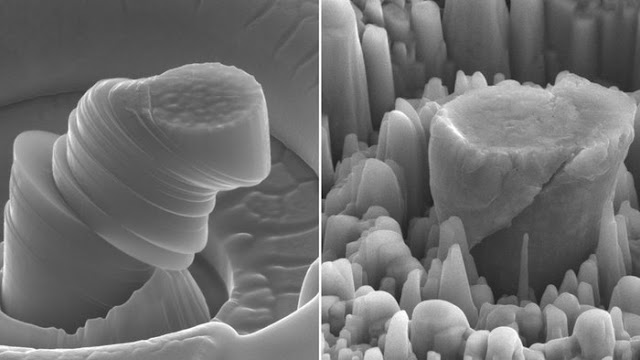Magnesium has a number of potential advantages when it comes to engineering. It is considered the lightest of structural metals (those capable of bearing loads in buildings and cars) and it is the eighth most abundant element in the Earth's crust. On the flipside, however, it is not as strong and durable as some of its counterparts. Scientists are now reporting to have overcome its main limitations by infusing it with silicon carbide nanoparticles to form a new type of super-strong composite material, which they claim may lead to lighter and more efficient airplanes, spacecraft and cars.
"It's been proposed that nanoparticles could really enhance the strength of metals without damaging their plasticity, especially light metals like magnesium, but no groups have been able to disperse ceramic nanoparticles in molten metals until now," says Xiaochun Li, Professor of Mechanical and Aerospace Engineering at the University of California, Los Anglese (UCLA) and leader of the research team.
Previous efforts to infuse metals with microscale ceramic particles has caused a loss in the material's plasticity. Researchers have sought to overcome this by working with ceramic particles at the nanoscale, which make the metal stronger while maintaining, or sometimes even improving, its plasticity. But this brings on other problems, as the nanoscale particles are inclined to clump together in the metal, rather than dispersing evenly.
At the heart of the UCLA team's breakthrough is a new manufacturing approach involving the use of silicon carbide, a super-hard ceramic commonly found in industrial cutting blades. Silicon carbide nanoparticles smaller than 100 nanometers were able to be dispersed into a molten magnesium zinc alloy in such a way that the kinetic energy in the particles' movement prevented them from clumping.
The material was then compressed using high-pressure torsion, a metal processing technique where compressive force and torsional straining are applied to the sample simultaneously. This approach has grown in popularity over the last two decades as it helps achieve a high level of strength and grain refinement, often at the nanometer level.
The resulting metal composite is made up of around 14 percent silicon carbide nanoparticles and 86 percent magnesium. In testing, the team found that it demonstrated record levels of both specific strength (how much weight a material can withstand before breaking) and stiffness-to-weight ratio. Furthermore, it also showed superior stability at high temperatures.
"The results we obtained so far are just scratching the surface of the hidden treasure for a new class of metals with revolutionary properties and functionalities," Li says.


No comments